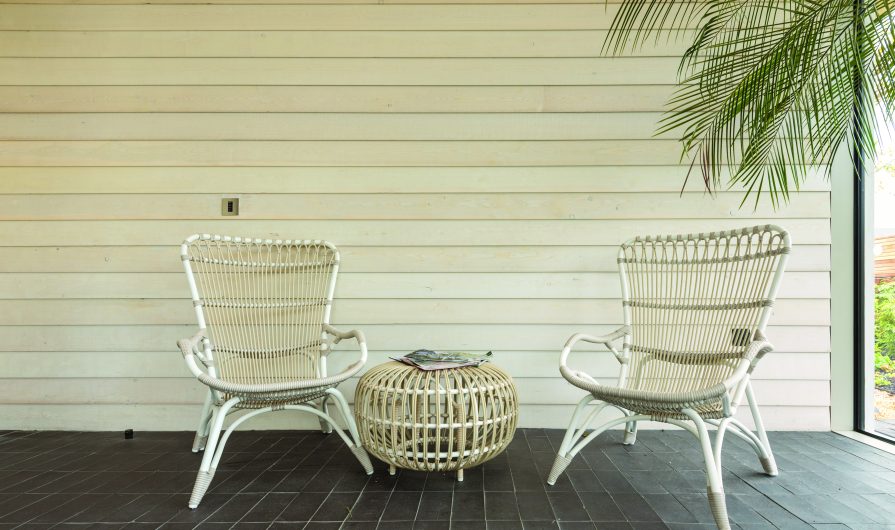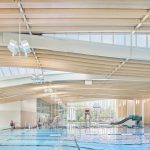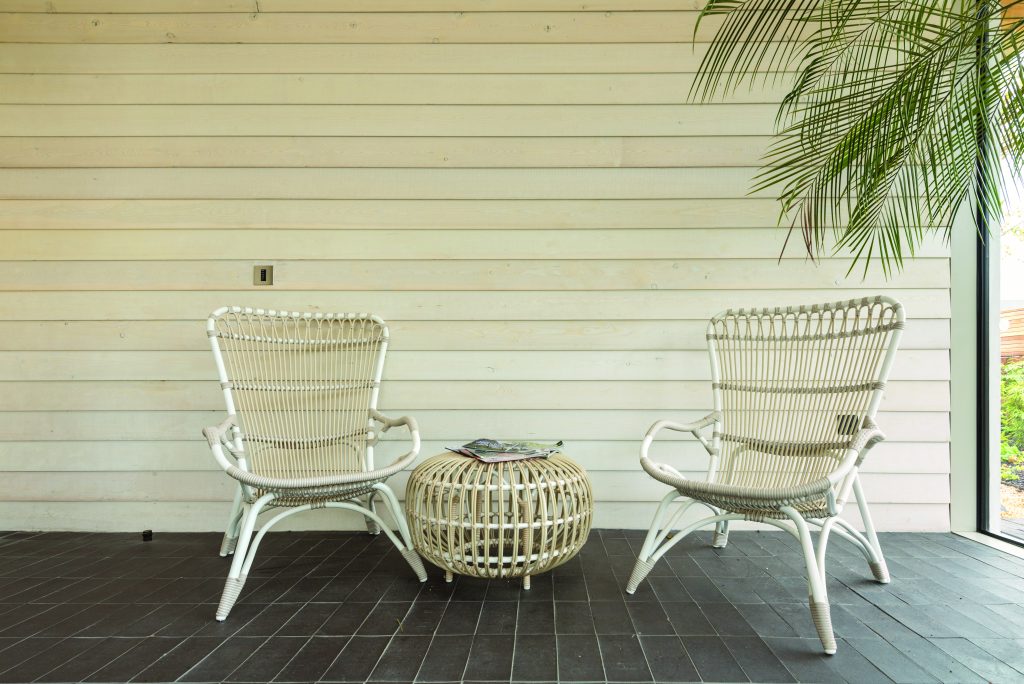
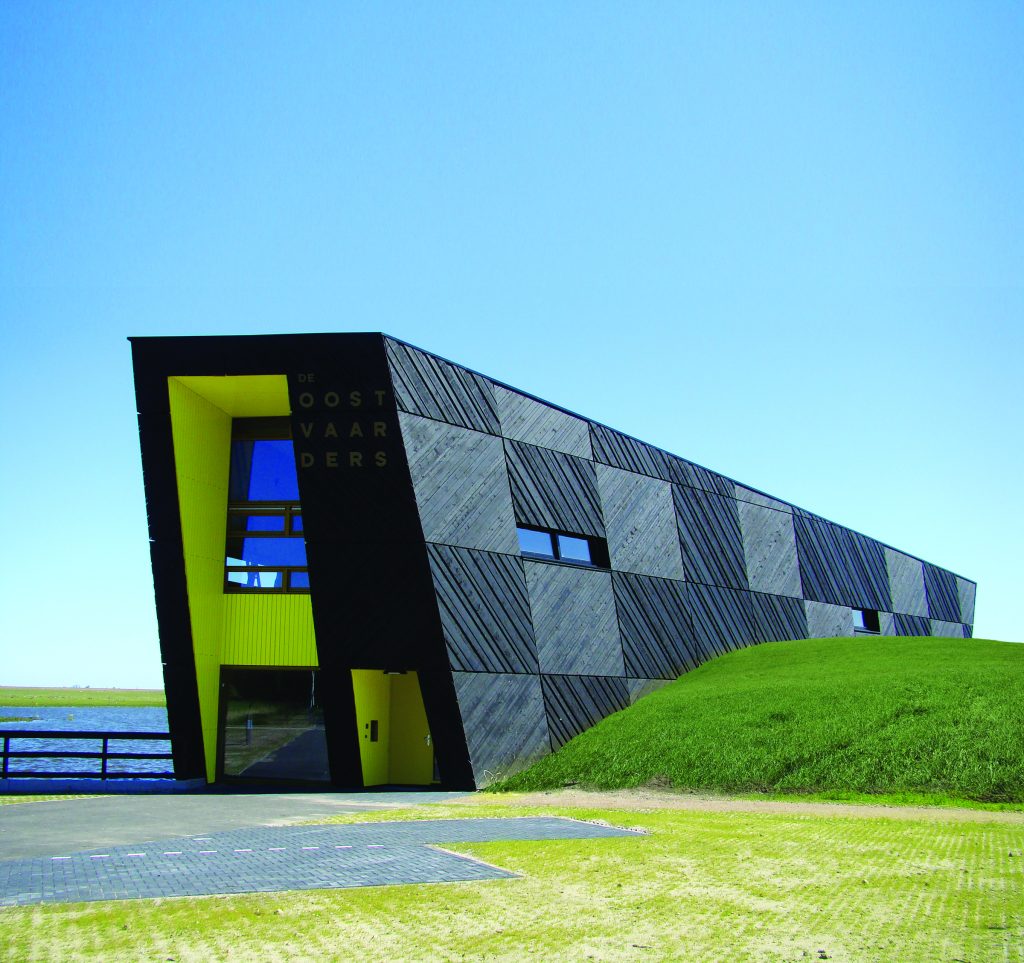


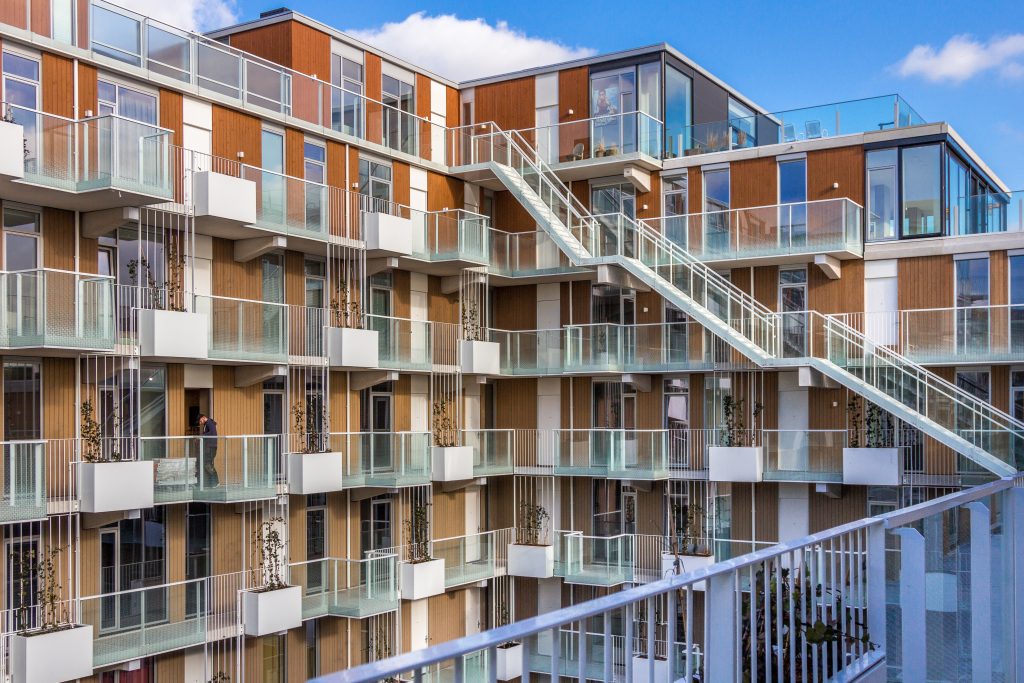
Choose the right hue for your timber structure…for perfection and protection.
Caroline March-Long
When it comes to protecting wood, there are as many colors for architectural finishes as there are professionals bringing their visions to life. The color chosen for wood finishes can make a bold statement, lean toward the trendy or traditional, or be treated to allow for natural weathering with protection. Often, architects choose colors that enhance the natural notes of certain wood species, such as Western red cedar or Douglas fir. But what are the best practices for getting the desired look while still offering the wood maximum protection?
For more than 35 years, Sansin has helped architects and builders protect some of the world’s most beautiful wooden structures. Director of marketing and sales Caroline March-Long shares expert advice, along with examples of projects that have used Sansin finishes to showcase wood in beautiful and creative ways.
What are the most requested hues in wood stain colors?
We work with some of the most renowned architects and builders in the industry, and it’s very inspiring to see how they’re designing with wood and thinking carefully about what type of stain and color they want to highlight the wood. We’ve been seeing a lot of bold Onyx, which is nearly black, and this creates a very modern feel. On the opposite end of the spectrum, Pickled White is a popular choice for rustic chic, coastal, or country designs. Autumn Gold is one of our most popular shades. It’s golden brown with rich honey undertones and is a classic choice that defines and enhances the natural character of wood. Gray hues continue to trend, too, for both traditional and contemporary designs.
What factors should you consider when selecting a shade for wood protection?
The most important factor is the wood’s exposure to UV light. Generally, the darker the pigment, the more substantial the UV protection, and the longer the expected time between maintenance coats. When recommending a coating system and color, we take into account how UV exposure may lighten the coating over time, along with exposure factors.
As for the exteriors, UV exposure and moisture management are the most important considerations, so we need to think about the building location’s climate, the orientation of the building, and the design features that impact UV exposure. For example, some exterior surfaces have limited contact with sun because there are well-protected soffits under the roofline or vertical cladding under ample overhangs. Conversely, other areas like decks get lots of sun and moisture exposure.
This can typically be addressed with the selection of color and the use of topcoats. Since our products are waterborne, penetrating formulas, the first coat is most important for getting the product into the wood. Subsequent topcoats can provide added UV protection and increase water repellency.
Another consideration to keep in mind is that the color can vary dramatically from one substrate to another. The same color applied to pine may look quite different if applied to cedar, for example. Additionally, you can control the level of protection with the number of coats you apply. This is why when we work with architects and builders, we ask them to send us samples of the substrate they plan on working with, along with details on the project—including the factors mentioned above—so we can recommend the appropriate type of finish and color formulation to offer maximum protection while achieving the desired look.
How can you achieve a “natural” look while still protecting the wood?
Most important, we recommend waterborne finishes that penetrate the wood rather than sit on the surface. This enables the coating to dive deep into the wood fiber and allows the wood to “breathe” more freely so moisture doesn’t get caught inside the wood.
However, you mustn’t confuse the goal of achieving a natural look with the approach of using a non-tinted, clear coating on exterior exposed wood. As mentioned, color equals UV protection. An absolutely clear coating is simply unlikely to meet maintenance expectations or be durable enough under exposed conditions.
If the intent is to allow the finish to naturally fade to gray, we still need to protect the wood substrate from any intruding moisture, which can lead to biodeterioration. We recommend a
low-VOC waterborne protective wood treatment that aggressively repels water while allowing wood to breathe. Over a short time, the wood will weather uniformly to a beautiful silver-gray tone.
Is it possible to get a “weathered look” while also protecting the wood?
For architects who want to have an on-trend weathered look without sacrificing wood protection for aesthetics, a weathering treatment with high water repellency is the best option. There are specially formulated waterborne products that offer premium protection with the look of naturally weathered wood, and some offer a variety of barnboard colors, from gray and red to brown. With these treatments, the wood will weather uniformly to a beautiful silver-gray tone over time, yet maintain water repellency and protection against weathering and wood rot.
How important are undercoats, and is it possible to use one and still achieve the look you want, especially if you want a “natural” finish?
Application of a waterborne protective undercoat is an important first step for any architectural coating system, especially if the wood needs protection in transit from the factory to the job site. These broad-spectrum protective coatings can be applied in a clear, imperceptible coat or a tinted color—depending on the final coating system and desired aesthetic.
Further benefits of an undercoat include dimensional stability of the wood components and moisture management. Absorption of the undercoat also increases topcoat performance. It’s imperative that the undercoat allows subsequent topcoats to sink in and penetrate the wood for optimal clarity, color, and protection. When used as part of an architectural coating system, the undercoat can be tinted and used as the first coat.
What are the best practices of wood stain no matter the color choice?
First and foremost, you should always follow the manufacturer’s application instructions. We strongly recommend—especially for large projects—that at least the first one or two coats of the product be applied in a factory setting where factors like pigment load, temperature, humidity, and dust can be precisely controlled. This also ensures the wood will be protected in transit and on the construction site.
For waterborne finishes specifically, proper sanding is a critical first step to remove any mill glaze, open the pores, and allow the waterborne finish to penetrate deep into the wood tissue. To achieve a longer maintenance interval, we recommend applying product to all six sides of the wood. Also, applying the appropriate mil thickness for each coat is important for pigment loading and proper protection.
One final, yet important, note: we recommend checking the coating every six months (but no less than annually) to identify any worn areas that need to be addressed. If problems are caught early, maintenance can amount to simply washing the surface and then applying a maintenance coat of finish. However, if the wear gets through to the exposed wood, you could be looking at a much more time-intensive and expensive maintenance process.

